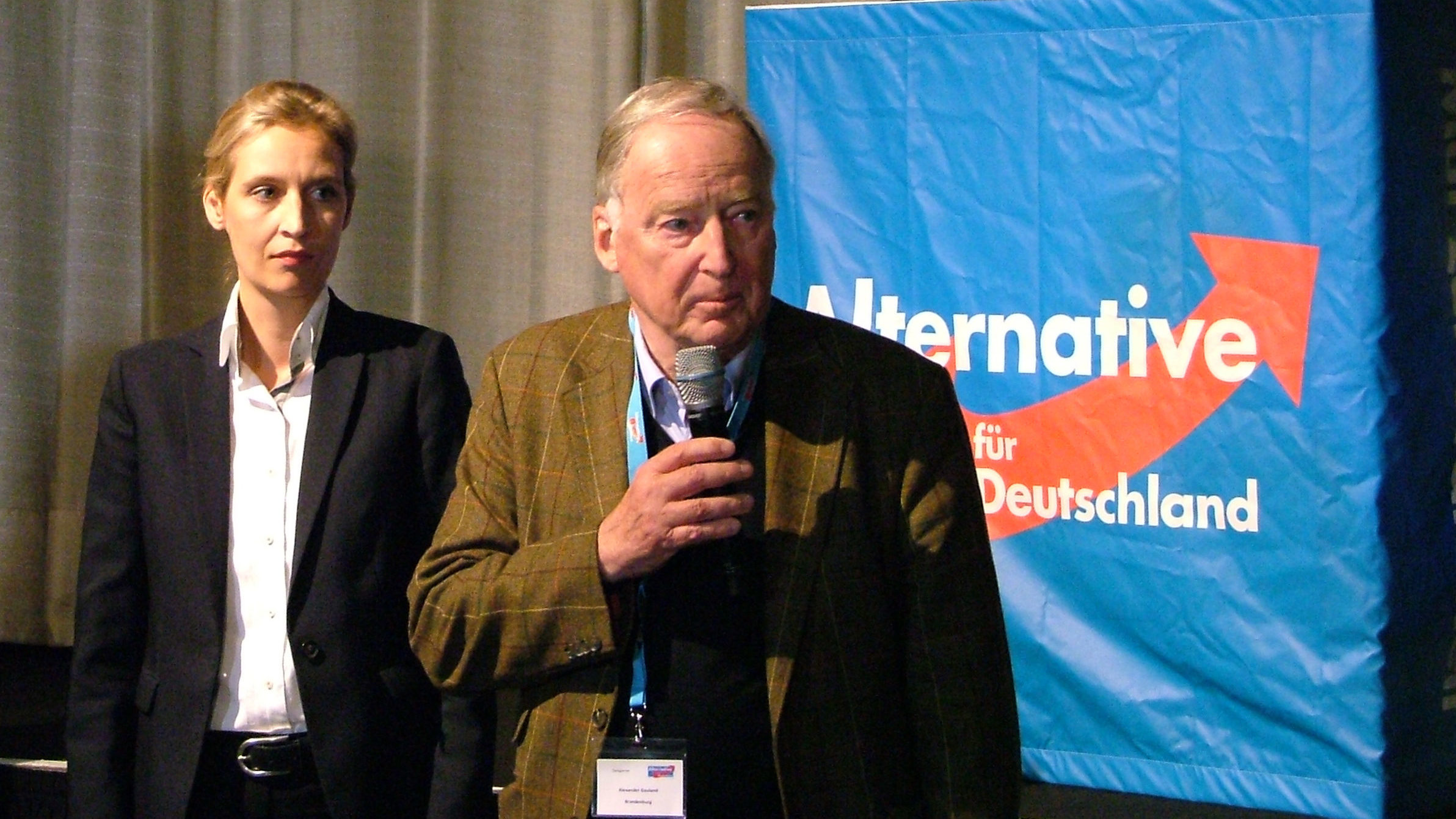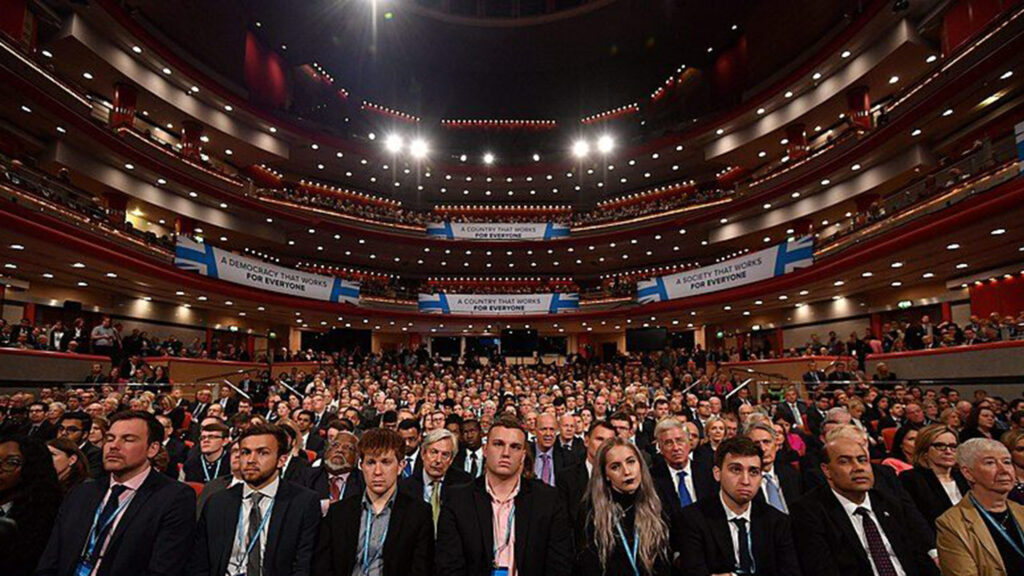Alternative für Deutschland (AfD – Alternative for Germany) appeared on the German political scene just over ten years ago, and has had a difficult start, to say the least. Suffering from an early split in 2015 that saw its more moderate centrists depart, the party has increasingly moved to the right, and now sits comfortably in the populist, radical-right category.
Moreover, in the last two months the German authorities have classified the AfD’s youth movement as extremist, whilst the party has come under increasing scrutiny from security agencies, heightened further by the arrest of 25 far-right conspirators in December – one of whom was an AfD member.
Green shoots on the far-right
These are, naturally, concerning facts surrounding what has become Germany’s second most popular party – for the second time in five years. The AfD has risen rapidly, from 10.1% a year ago – which, it should be pointed out, is on-par with their national performance in 2021 – to between 16.7% and 20% now. Almost concurrently, the Greens – the “polar opposite” to the AfD – have fallen from 21% to between 14% and 15%.
But this concurrent fall is more connected to the AfD’s rise than the wide ideological gulf between the parties might suggest. Recently, Deutsche Welle ran an analysis that the AfD has benefited from attacking the government’s environmental policies, as well as taking the Greens head on over this policy. But to understand why this strategy is seeming to work, it is necessary to consider their core supporters, who they are, and what motivates them.
The first major analysis of the electoral support for the AfD was published in 2018, concluding a number of important points regarding the AfD’s voter base. Crucially, support largely comes from the following groups: men – a common occurrence for right-wing populist parties; citizens living in the regions of the former German Democratic Republic – though this declines amongst voters who have grown up in a unified Germany; and, interestingly, citizens born outside of Germany – though these are typically Eastern European and Russian migrants. Beyond this, the researchers were keen to stress, “it is hard to come up with a unified picture of AfD support”.
And, in terms of these groups’ concerns, two prevalent factors emerged: a belief “that the right to political asylum is a bad idea” with medium to strong welfare chauvinism; and “strong fears of future economic decline”.
It seems little surprise, then, that AfD received its first major jump in the polls between 2016 and 2018 as the migrant crisis engulfed Europe and Germany welcomed over one million refugees.
At this stage, it would be easy to explain away the AfD’s increasing popularity with the similar surge of refugees following the outbreak of the war in Ukraine; but this is where the “fear over future economic decline” becomes important. Put bluntly, by 2018 the first factor in support for the AfD had been met – a massive surge in immigration – and now, five years on, the second factor has been met – a worsening cost of living crisis.
And lurking below the meeting of this second factor lies an important confluence that is becoming increasingly popular across the Western world: as the cost of living rises, so too does resistance to environmental policies. As in the United Kingdom, where calls to scale down the decarbonisation agenda are fuelled by concerns over rising energy prices, the AfD has tapped into a discontent with the German government’s green agenda.
Unlikely bedfellows
There are indications, however, that the issue is more complex than simple “anti-” and “pro-” environmentalism at play here. As has been commented on, more than once, anti-immigration sentiment and ecologism can and indeed do overlap, using a language of “blood and soil” that, in the context of German politics especially, has particularly dangerous connotations.
We need to tread carefully, though. There are crossovers between Green supporters and ostensibly conservative voters, not just those on the “far-right” – as we saw in the UK, very recently. As Ben Spencer and Hugo Daniel write, the seemingly odd overlap lies at the intersection of “a conflict between modernity and traditionalism, between creeping suburban sensibilities and entrenched rural conservatism, between environmentalism and pastoralism.” And as Peter Franklin warned, the Tories should be wary of the Greens sapping their voters.
Logic dictates that if voters can move in one direction, they can move in the opposite direction too – and the AfD’s profile would suggest that they are capable of tapping into that well of discontent that lies beneath the support for environmental parties. Politicising environmentalism as left- or right-wing blinds commentators to the reality that, for many people in Germany, defence of the environment can be, and is, a source of national pride.
This might be why, in the AfD’s manifesto, they propose “to minimise the consumption of uncultivated land, reduce soil and water pollution, and improve the quality of air. In addition, measures are to be taken to curb noise-pollution”. Part of the proposal to deliver this is the reversal of the German state’s move away from nuclear energy – which would, it should be pointed out, bring German energy policy into line with its biggest neighbour.
Lessons to learn
Given this, what are the lessons to draw here?
The first is that Deutsche Welle’s claim that environmentalism is “anathema” to this right-wing party should be rejected, and instead it is entirely plausible that German voters could be gravitating towards different environmental policies that are not perceived to exacerbate the cost of living crisis. And, in tapping into the national pride that comes from a defence of the environment, the AfD might indeed be weaponising the cost of living crisis; or they might simply be benefiting from it in the same way the Dutch right is.
None of this is to say that the same voters instantly switched over from the Greens to the AfD – there are swing voters, there is apathy, there is voter mobilisation, and a whole host of reasons as to why parties’ vote shares rise and fall. But at the same time, what might depress a potential Green voter from turning out, might also activate a potential AfD voter.
The second is that the depiction of the AfD as a National Socialist revival might be overblown.
Towards the end of the last decade, as AfD went from being a marginal force to having an impact on German politics, there were several alarms raised that Germany’s dark past was coming back, with one commentator asking in 2017 “Have we not learned from the war?”, with another observing in 2018 that “Nazi language is once again being heard in Germany”.
The AfD’s position on the political spectrum is without question, and they do sit well on the right, but to presume that this is a Nazi revival is to presume that the AfD is benefiting from factors unique to Germany alone. Instead, as the 2018 paper cited above pointed out:
“The electoral success of Germany’s newest right-wing party is largely due to the same set of socio-economic, attitudinal and contextual factors proven so important to explain the fortunes of Populist Radical Right Parties (PRRPs) in other countries.
In summary, right-wing political attitudes concerning immigration, political dissatisfaction, fears of personal economic decline, as well as gender and socialisation effects, are the most relevant explanatory variables.”
It would seem, then, that Alternative für Deutschland’s support is not due to the simple “historical” explanation – they are not the Nazis, and their supporters, whilst motivated by concerns about mass immigration, are not simply the racists of the 1930s or 1940s. There may well be racist sentiment amongst AfD voters – ruling that out would be unwise, especially as there remain racist movements across the West – but the motivations are always more complex.
Instead, the increase in support for the AfD lies at a cross-section of circumstances unique to Germany in the 2010s and the pan-European circumstances post-2008 that have activated the wave of populist support across the continent, from Vox in Spain, to the Swedish Democrats, to the Fidesz near-monopoly in Hungary. Whilst Germany has been facing a migrant crisis for the last six to seven years, it is now facing a cost of living crisis as well, and while the two may be completely coincidental, that coincidence has the potential to catapult the AfD even further up the polls.










